Winter can be a difficult time to design containers for outside your home. In a previous post I outline key elements to a successful container – thriller, filler, and spiller. While it’s not always necessary to have all three, it’s helpful to know design rules before you decide to break them. Knowing the rules can help you decide when it isn’t necessary to follow it by the letter. In the winter, it can be hard to come up with pretty container plant combinations since there are far fewer options than in spring, summer, and fall. Never fear! There are plenty of evergreen options that provide structure in the winter and cool season annuals for a pop of color. Hopefully this post will give you plenty of winter container ideas.
Evergreens are the name of the game for winter containers. Thankfully, evergreens aren’t limited to trees! There are evergreen shrubs, perennials, grasses, ferns, and vines.
Table of Contents
Thriller
The most important element for winter containers is the “thriller.” You can create height and interest through a variety of plants. The first would be evergreen shrubs. Some ideas: a wide variety of arborvitaes (Thuja), boxwoods (Buxus), holly (Ilex), Nandinas, fetterbush (Leucothoe fontanesiana), Euonymus, Mahonia, Yew, Florida Anise Tree (Illicium floridanum) and dwarf varieties of conifer trees like the cypress (Cupressus), false cypress (Chamaecyparis), Alberta spruce, or juniper.

Dwarf arborvitae as thriller 
Cherry laurel provides height to this grouping 
Mahonia Soft Caress provides height and foliage interest 
The charteuse colored Illicium is a sight for sore eyes in the winter
In addition to having an evergreen shrub in the container, the evergreen could take a special form. By shaping the evergreen into a topiary, it is the star of the container, and there is less need for a large variety of other plants in the container. Topiary can be in the form of spheres – one, two, or three – or a cone shape. In the picture below you can see that the three in the front have been formed into cones, and in the back are ones with spheres. You can do the topiary yourself – see this tutorial by Linda Vater, or you can buy them already shaped from the garden center.
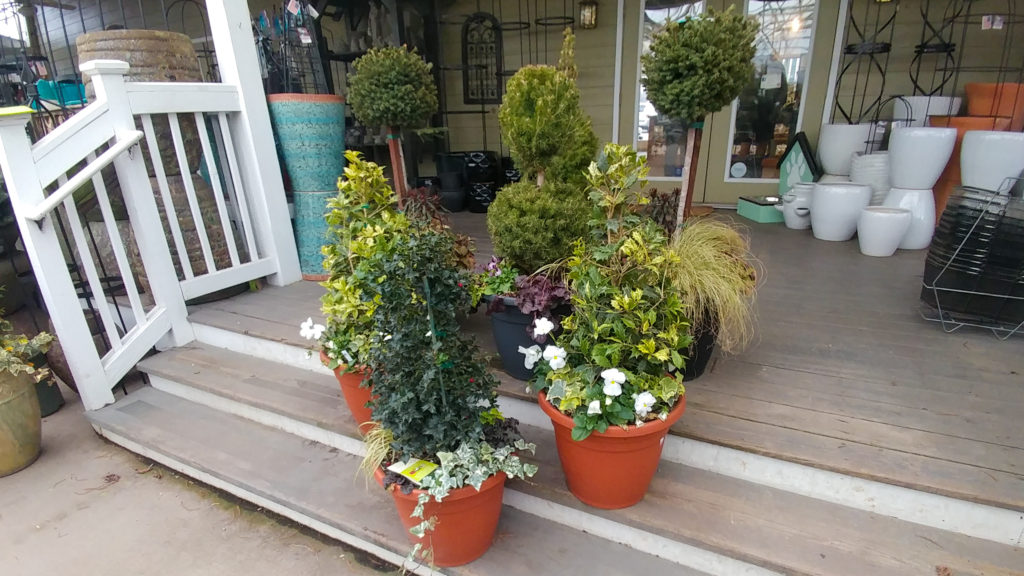
The first container below “breaks the rules” in that it doesn’t have a spiller, but when the main element of the container is so spectacular as this three ball topiary, the pansies are enough. In addition, with this topiary as the structural element in the container, the pansies can be changed out at the end of the cool weather to a warm season annual.
For an even bigger impact, the topiary can take a spiral form – see here for a tutorial video, or purchase it at a garden center already shaped.

The topiary is the star of this container which only needs a filler of pansies 
The spiral topiary is an incredible thriller which allows for more subdued fillers
Another way to have a “thriller” in winter containers is to use various kinds of twigs or branches that give a texture, color, and height interest. Many dogwood varieties have red or yellow bark. Branches or twigs can be used in a container or arrangement. Birch trees have interesting bark and branches can provide height as well as a textural element to containers. You can also use branches from winterberries (Ilex verticillata) for a pop of color.

These are unusual twigs 
Curly twigs 
Unusual twigs provide height and visual interest 
I love the contrast provided by the red winterberries 
You can buy twigs at garden centers like these at Moore and Moore
With an evergreen shrub or colorful twigs or berries, you can have a wonderful statement in your container displays even in the winter.
Filler
For fillers, you can go the annual or perennial route. The amount of annuals may be limited, but there are a wide variety of colors available. Cool-season annuals will be your best bet, but with freezing weather, they might not last long or might look a little rough around the edges. You can keep them or replace them throughout the winter. Examples include pansies, violas, ornamental cabbage or kale, dusty miller (Jacobaea maritima), sweet Annie (Artemisia annua), snapdragons (Antirrhinum majus), or calendulas. Pansies, ornamental kale/cabbage, and dusty miller are pretty ubiquitous are big box stores. You might need to start others from seed or find them at garden centers that have a wider selection.

Evergreen and semi-evergreen perennials provide another option for fillers. The most common would be coral bells (Heuchera), but some other possibilities are Bergenia, Silver Mound (Artemisia schmidtiana), Christmas Rose (Helleborus niger), Lenten Rose (Helleborus orientalis), spurge (Euphorbia). Shrubs can also be filler if they are compact enough. See below that fetterbush, nandina, and boxwood are compact enough at this stage that they can be fillers.

With such a distinctive filler, all is needed is filler. Here you see fetterbush, hellebore, heuchera, and euphorbia 
Depending on the size of other elements in the container, shrubs like Nandina and boxvood could be a thriller or filler.
Spiller
Possible spiller plants include carex, ivy (Hedera helix), creeping jenny (Lysimachia nummularia), periwinkle (Vinca minor or Vinca major), wire vine (Muehlenbeckia axillaris), and Angelina sedum. A word of caution – do some research before you plant any of these in the ground. Many of them are best kept in containers because they can be invasive. Carex can be a spiller depending on what else you have in the container. If you don’t have other taller plants in the container, carex can serve as the thriller. In addition, drooping fetterbush or evergreen ferns can be beautiful spillers.
In the first picture above, a container on my front porch, ivy is the spiller, heuchera is the filler, and carex is the thriller. The middle picture, from Cheekwood, has lemon cypress as the thriller with the annual pansy and perennial bergenia as filler, and carex as the spiller. In the last picture, the containers put together at Moore and Moore show how much difference a spiller can make – the variegated ivy pulls it all together.
Putting it all together
At the most basic level, having one each of thriller, filler, and spiller can be a pleasant winter container. However, some of the more beautiful winter containers can have more than one variety of plant for each. The more variation in heights, colors, and textures, the more beautiful the winter container
Here is a combination that I made for the steps up to our front porch. The Goshiki false holly is striking with its variegated leaves. Ornamental kale is the filler, and variegated ivy is the spiller. It could probably use some more filler, but I have some lily of the valley rhizomes in there that I am hoping will show up in the spring!
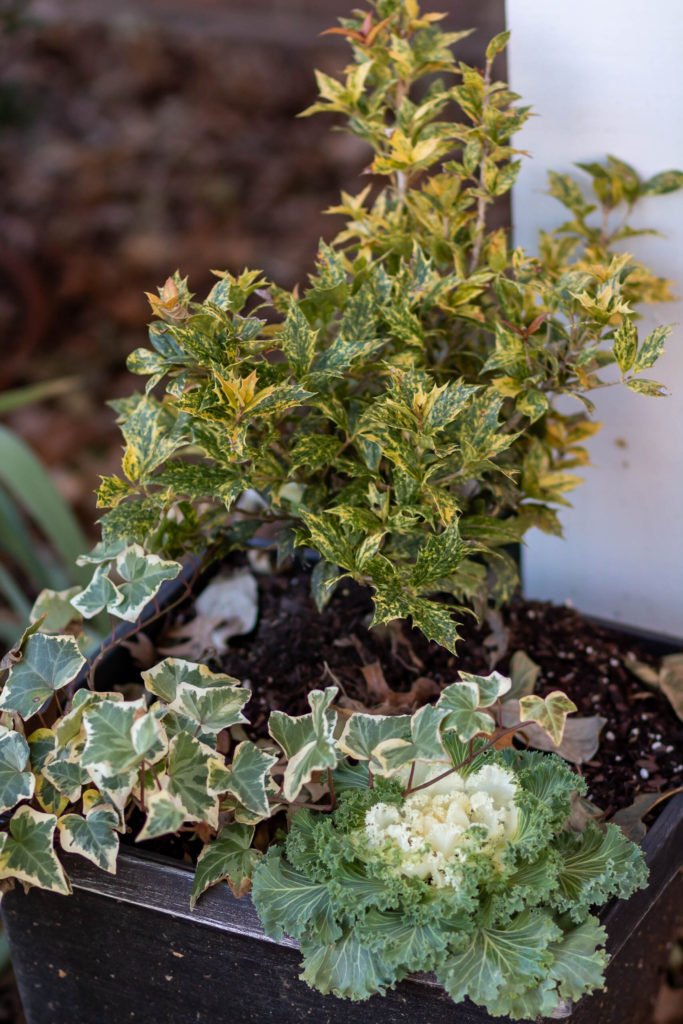
In the following container, dwarf Alberta spruce provides height and structure. At a mid-level height, this holly fern has dramatic foliage structure, while coral bells add a different colors foliage to the mix. The carex spills over the edge of the container.

Below is another container that uses dwarf Alberta spruce. As fillers, it makes use of the perennial heuchera in a lime green color and an annual ornamental cabbage. Autumn fern and carex both have height and spill over the edge. At this time of year, bright colors can really cheer up outdoor spaces that are mostly brown.

This last container from Cheekwood really puts all other winter containers to shame. It is full of plants For thriller, it has both a holly bush and red twig dogwood branches, and at a lower level, it has blue fescue (Festuca glauca). For filler it has euphorbia (I think), coral bells, and a hellebore. Carex ‘Everillo’ and golden mop cypress act as the spiller element. What I love are the variety of colors. It has deep purple with the dogwood twigs, the coral bells, and another purple foialge plant in the back. It has a deep green with the holly, medium green with the hellebore and blue fescue, and then a chartreuse green with the carex and gold mop cypress.
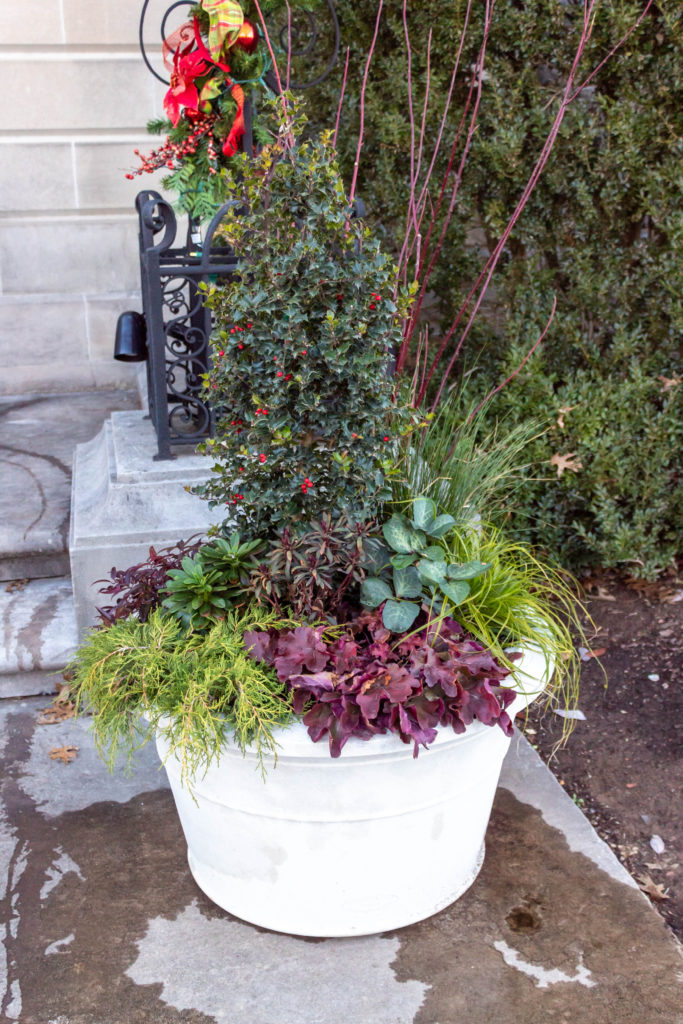
As you can see, once you get some ideas, there are a lot of possibilities for winter containers. I hope this helps guide you in plant selection, the forms and colors available, and how to have visual interest at a time of year when the garden can be pretty bland. Don’t worry too much about whether it’s perfect or not – just try some plants together and see how they look. You can always switch them out if you don’t like them! Nothing is permanent! Let me know in the comments what combinations you have tried. What has worked and what hasn’t worked?
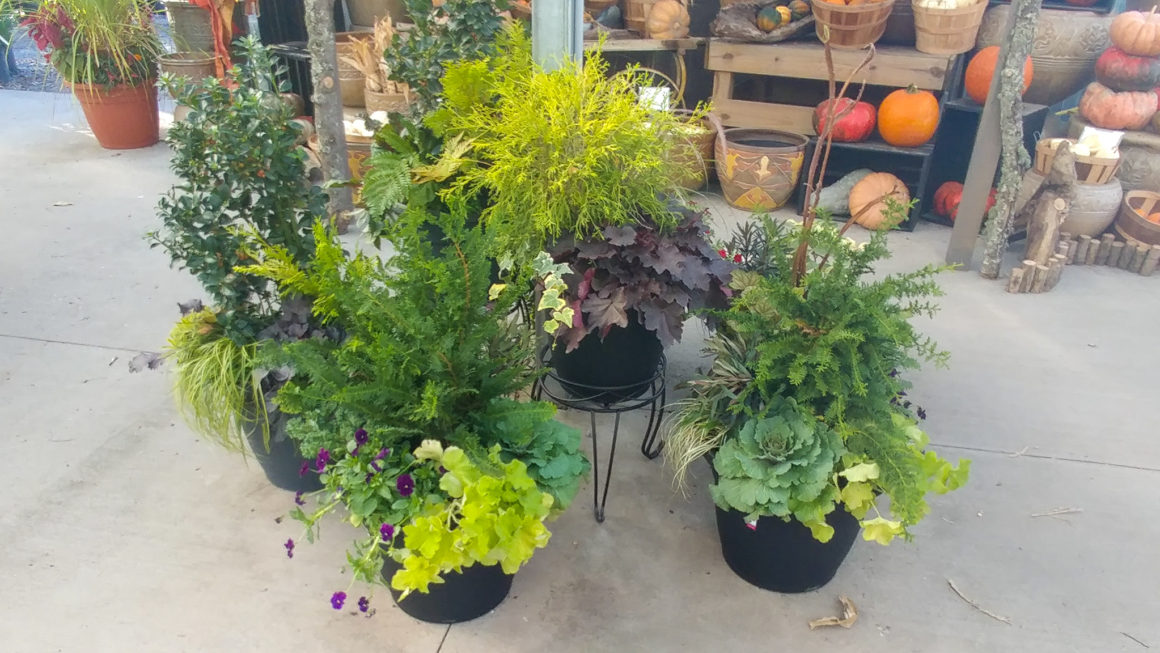
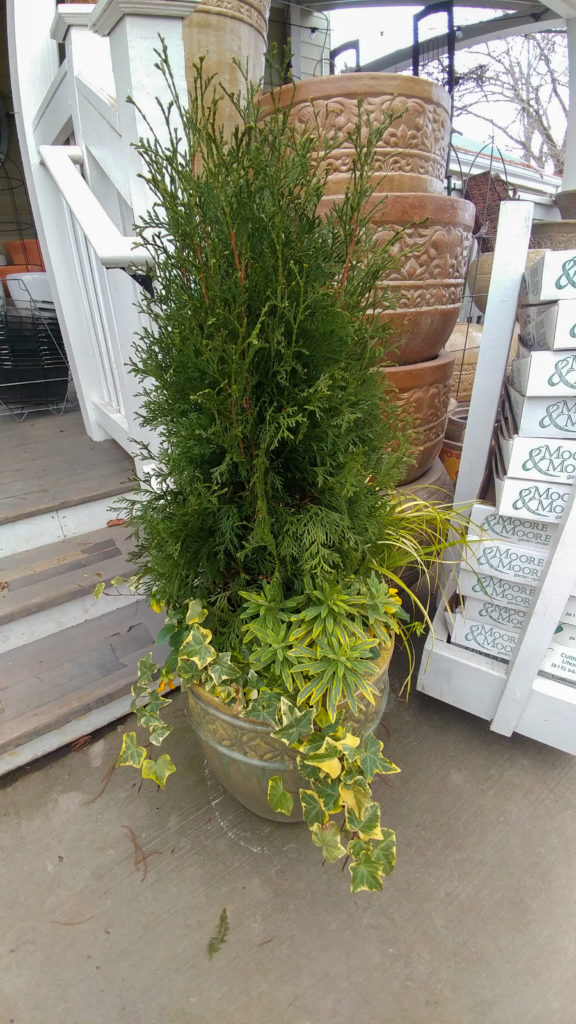
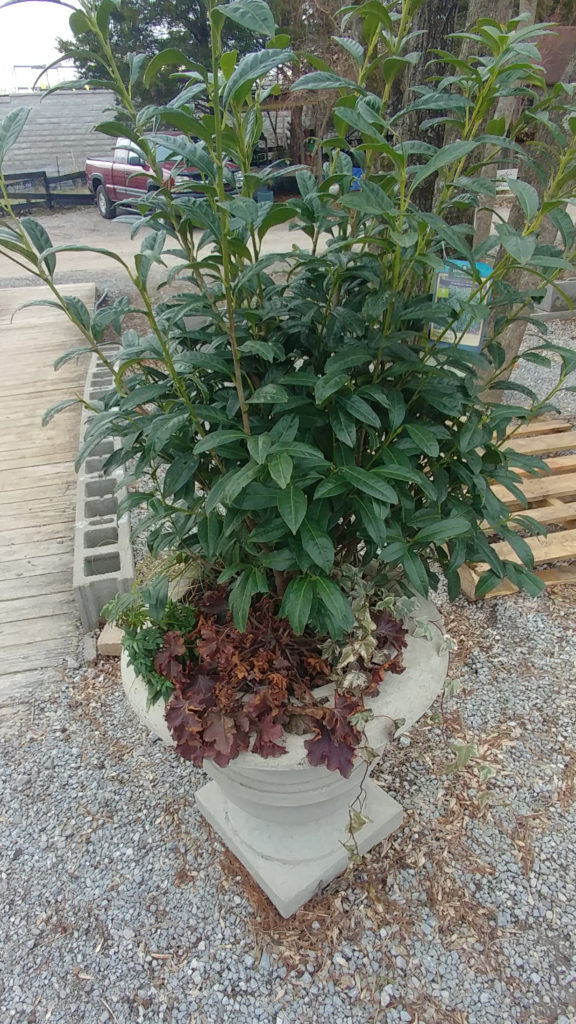
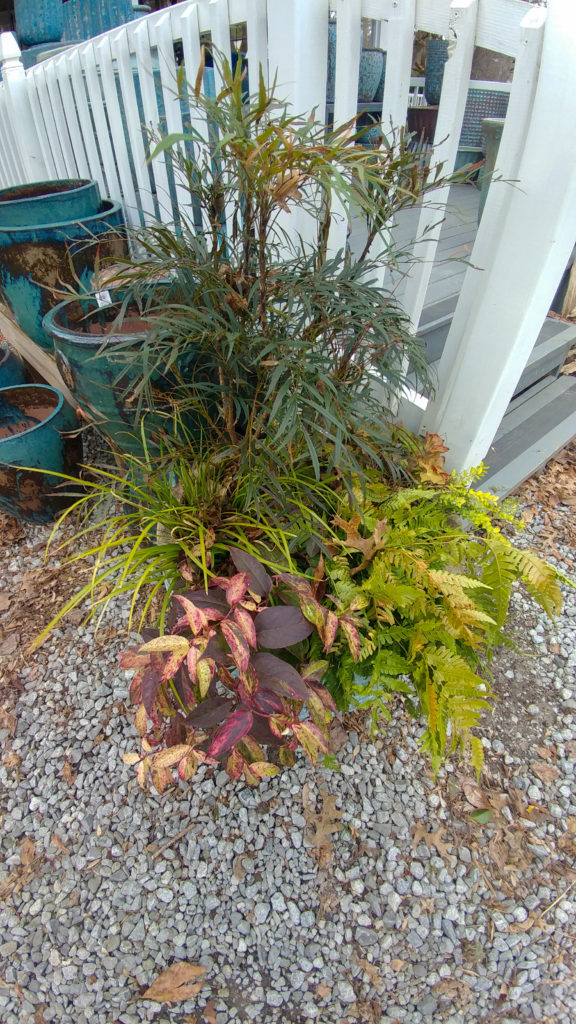


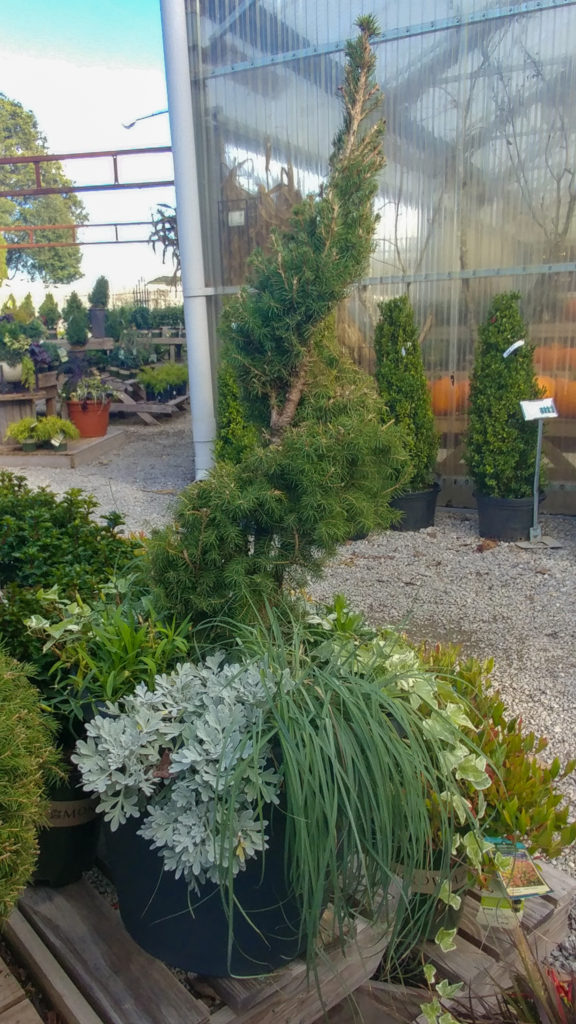
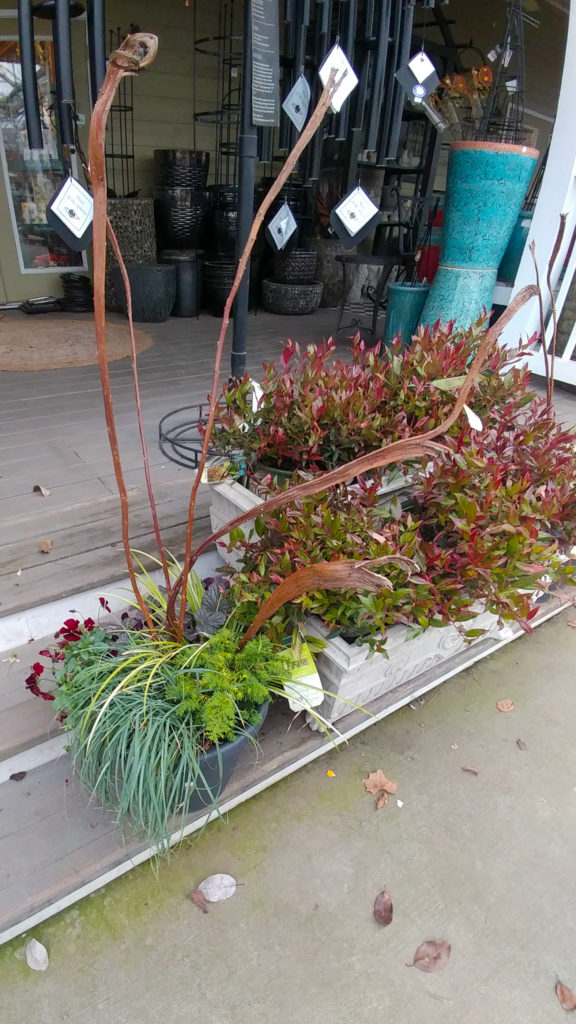
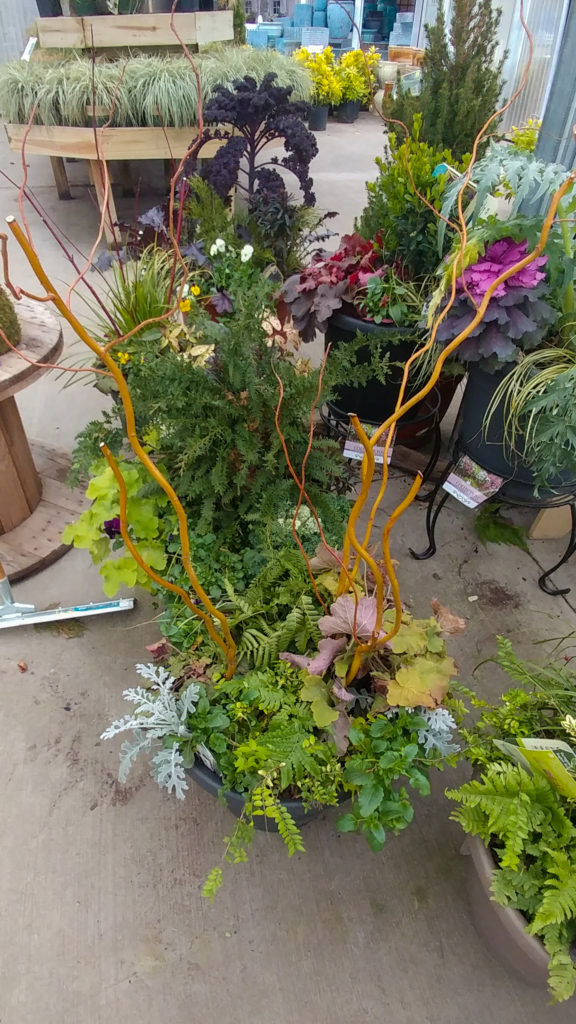

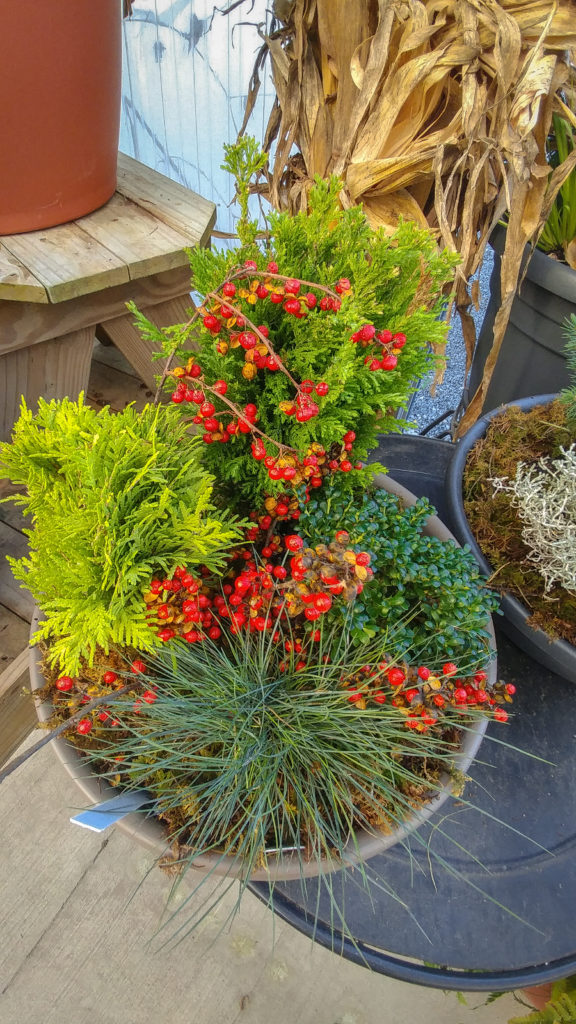

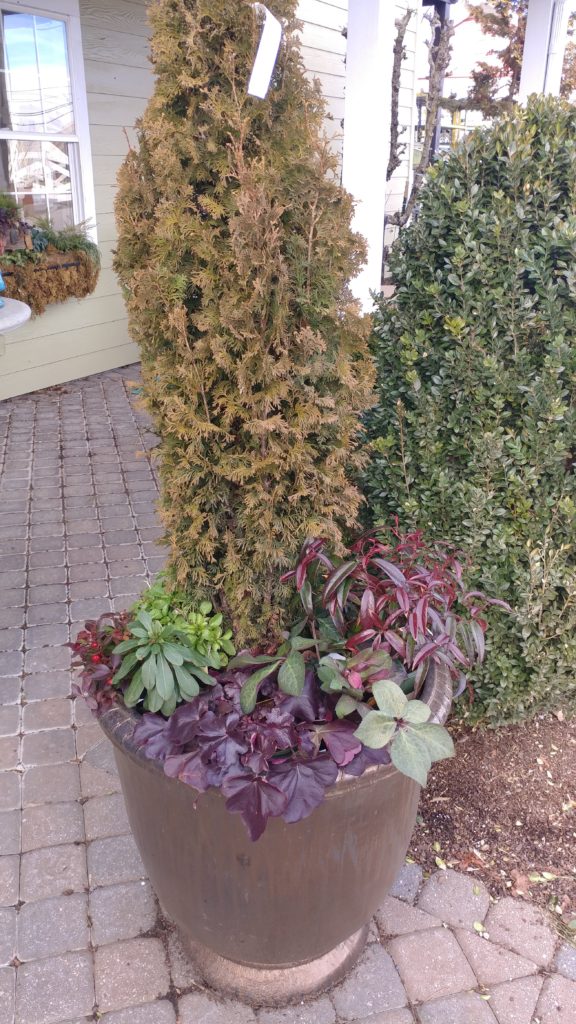
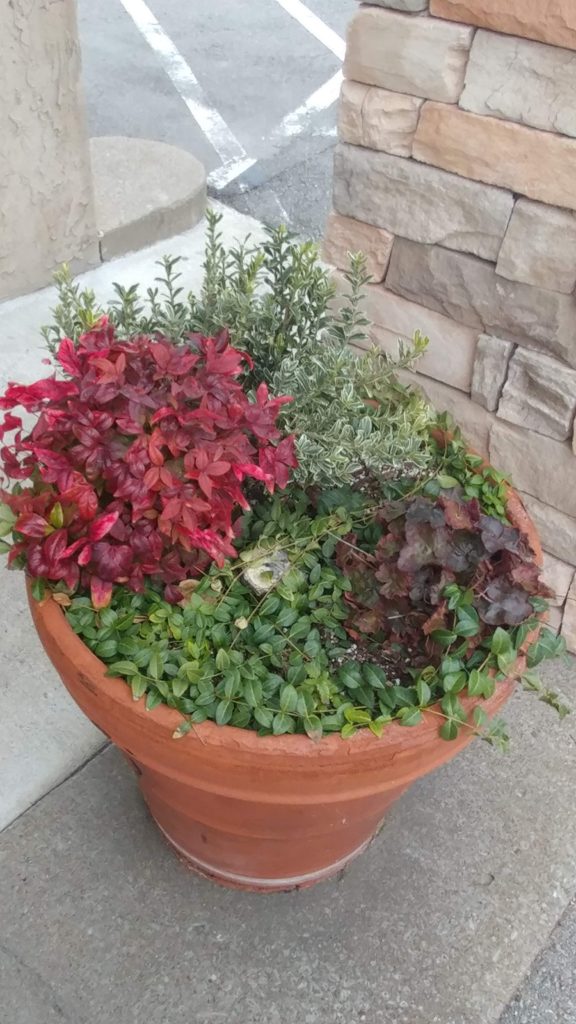


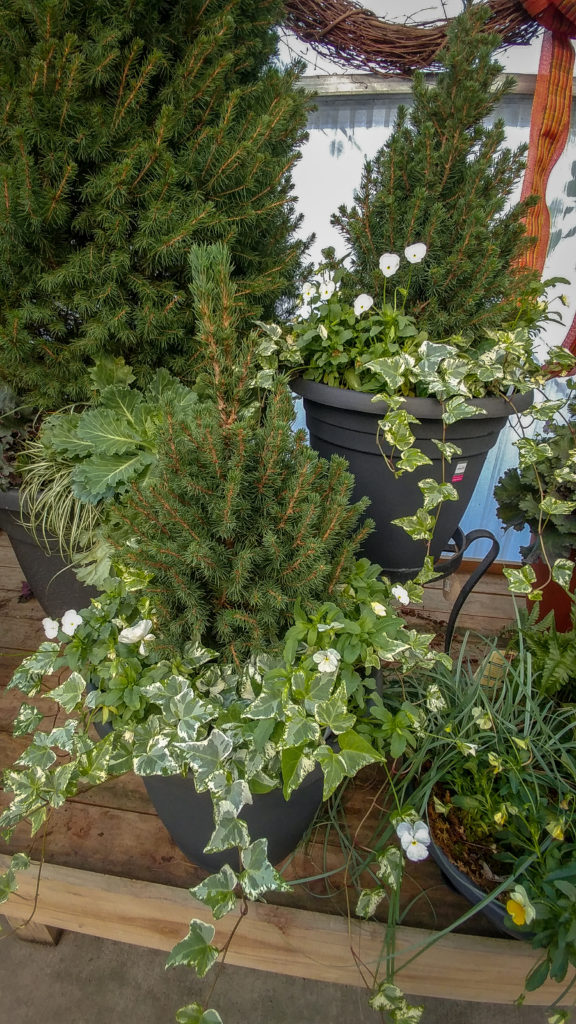



Although, I am not a gardener, it was fascinating for me to read about it. I am totally sure, that this information will be valuable for women.
Glad you enjoyed it – I hope it’s useful to everyone, not just women!
Why just women? I know a lot of fantastic male gardeners and horticulturists.
From,
A Woman
100%